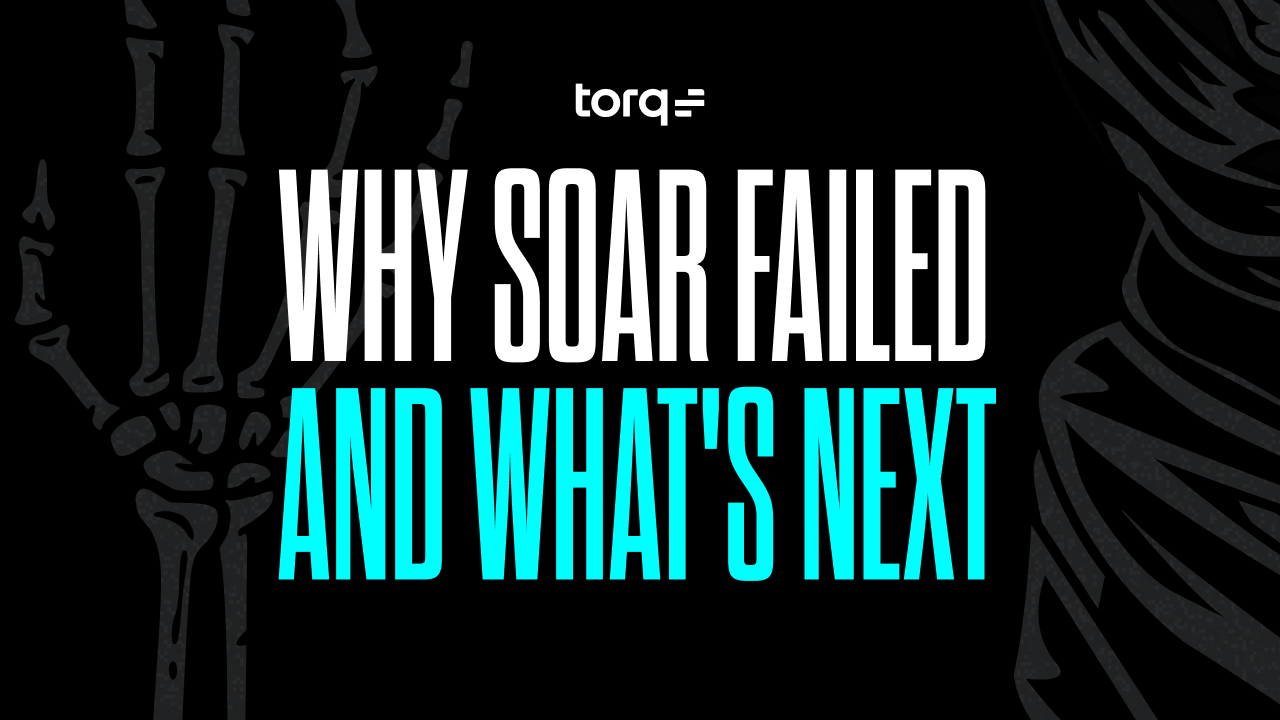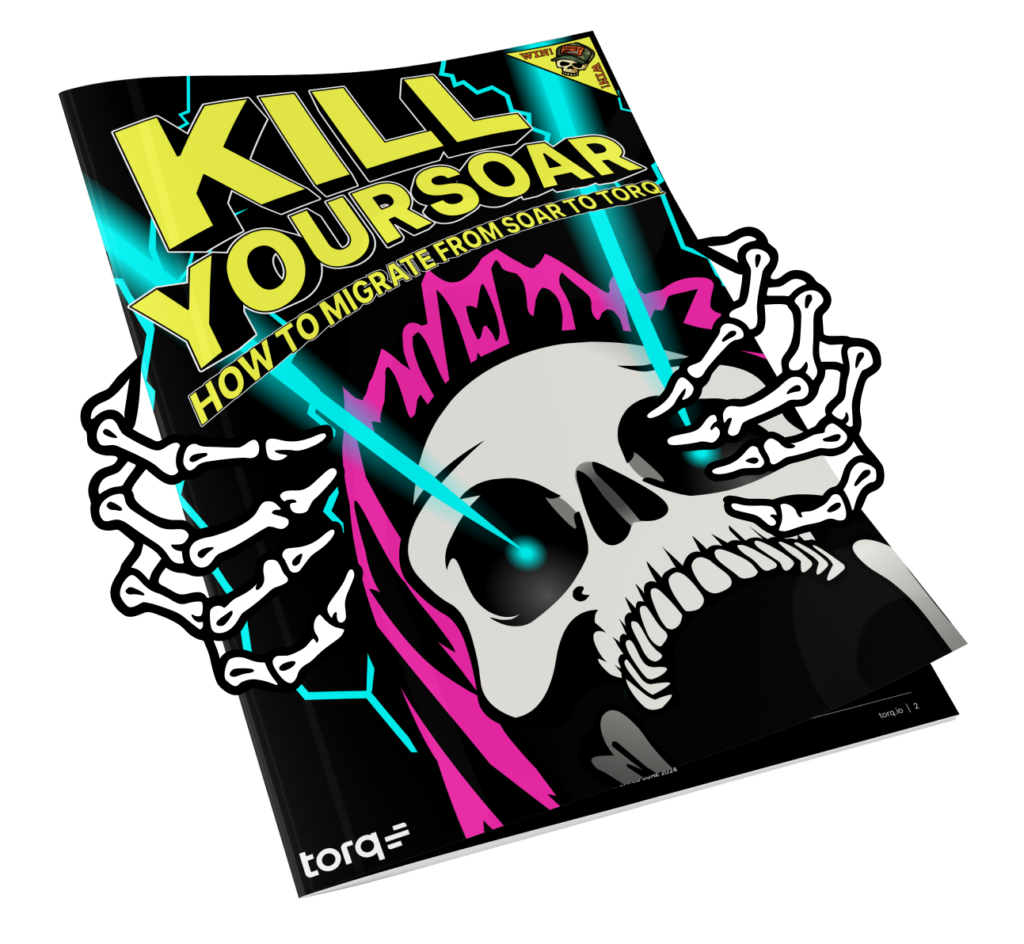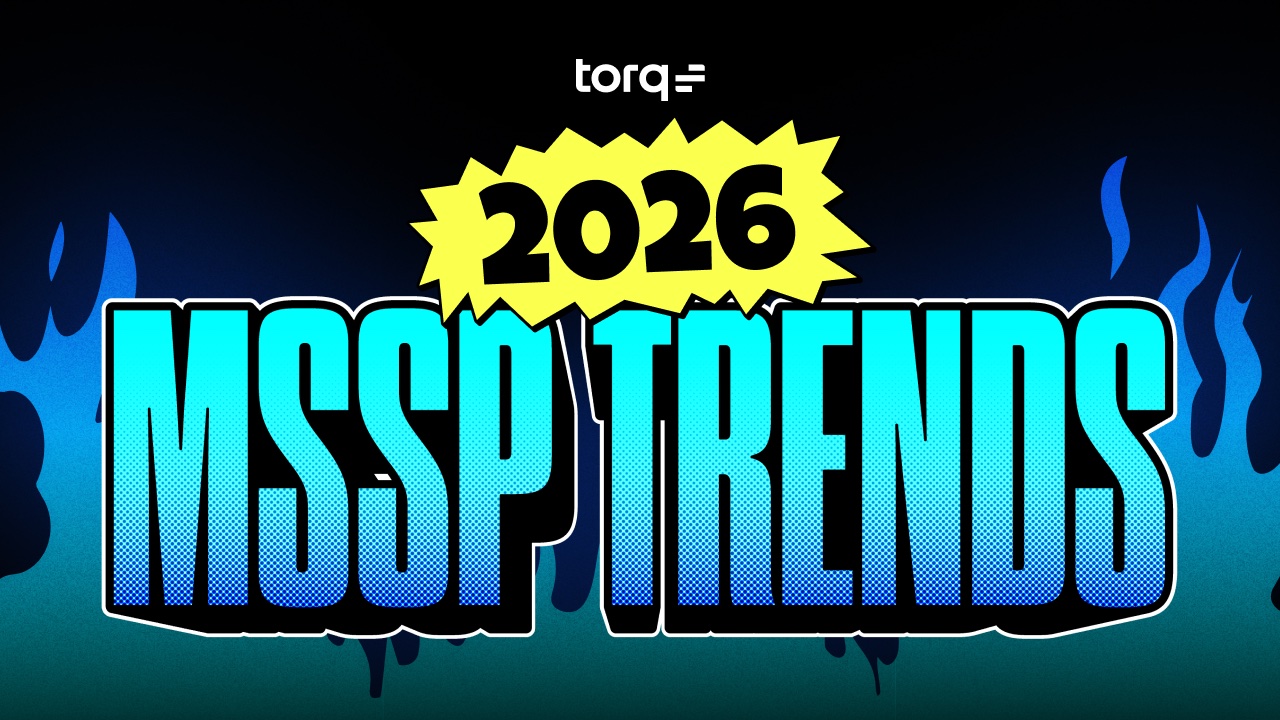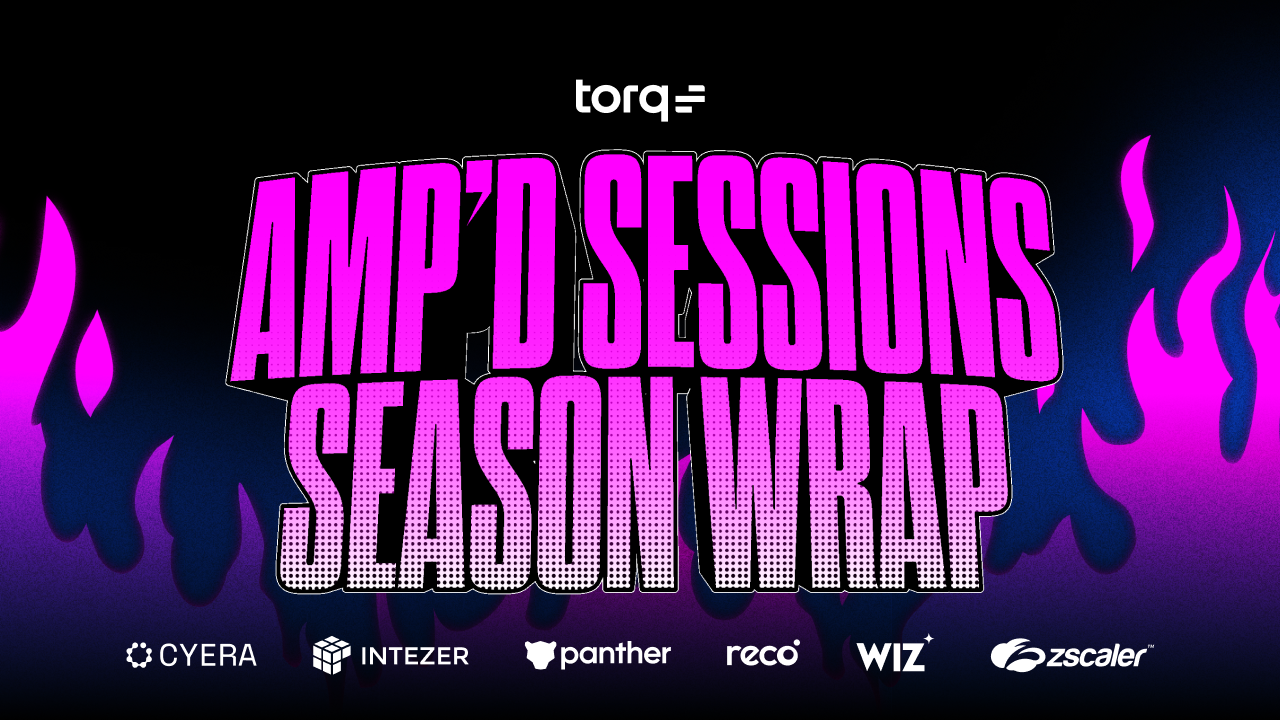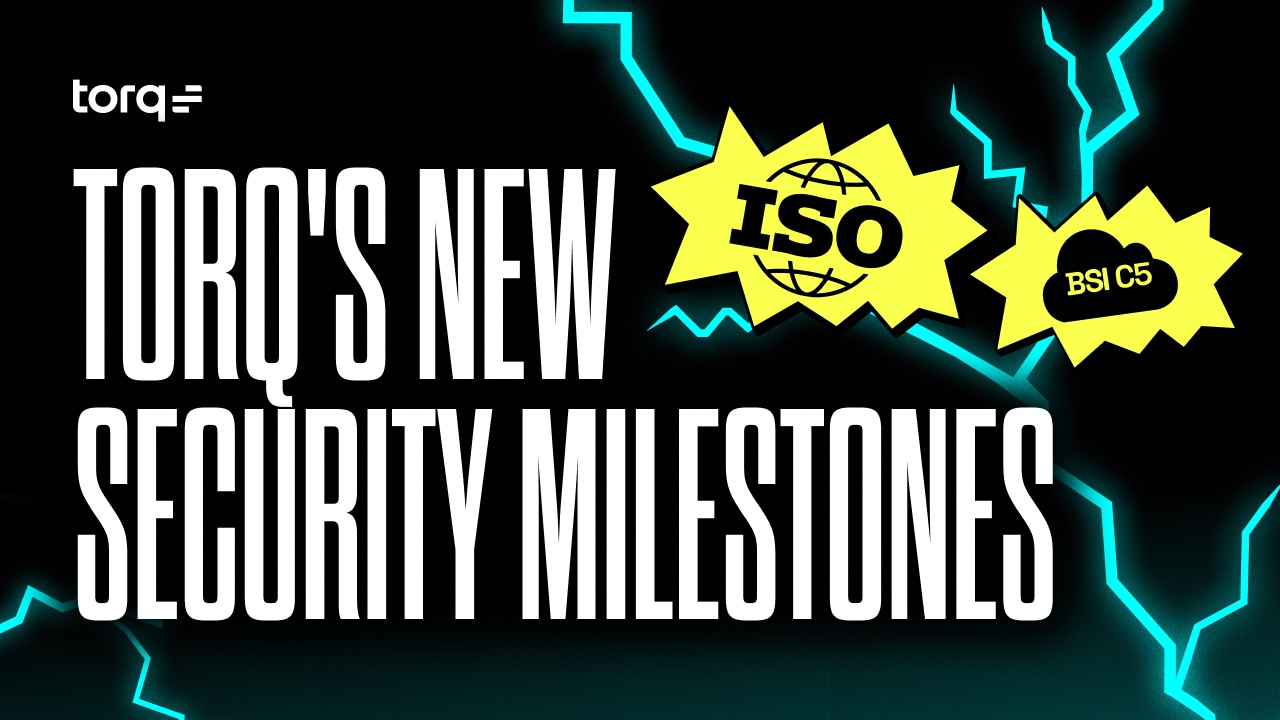Contents
Get a Personalized Demo
See how Torq harnesses AI in your SOC to detect, prioritize, and respond to threats faster.
Security Orchestration, Automation, and Response (SOAR) was once hailed as the answer to a more efficient and automated Security Operations Center (SOC). The idea was compelling: automate repetitive tasks, reduce manual workloads, and speed up response times.
But fast-forward to today, and despite generations of SOAR evolution, SOCs are still battling familiar challenges. Here’s why SOAR is dead — and why AI SOAR alternatives like Hyperautomation have replaced it.
What is SOAR?
SOAR first emerged in the mid-2010s, promising to automate SOC tasks and improve operational efficiency. It aimed to accelerate incident response, reduce manual workloads, and unify siloed tools.
While SOAR platforms were able to automate simple tasks like phishing response and threat intel propagation, they ultimately fell short in addressing the core challenges of modern SecOps: threat detection, investigation, and response (TDIR).
SOAR platforms were designed to orchestrate tools, automate workflows, and respond to alerts more efficiently. Theoretically, they should unify disparate technologies into a cohesive system where incidents can be enriched, triaged, and remediated through pre-built playbooks. So what went wrong?
Why SOAR Failed to Automate the SOC
To understand why SOAR hasn’t met expectations, examining the nature of SOC work is important. Security operations involve a combination of two types of tasks:
- Thinking tasks: Interpreting alerts, determining scope and impact, and creating response plans.
- Doing tasks: Activity-based tasks like taking response actions, updating systems, and notifying stakeholders.
SOAR platforms were pretty good at automating “doing” tasks, but they struggle with the more complex, judgment-driven “thinking” tasks. Here’s why:
- Too complex: Thinking tasks require deep understanding, data synthesis, security expertise, and decision-making. Replicating these traits with static playbooks is nearly impossible.
- Unpredictable: Security operations deal with highly variable inputs, which leads to an ever-expanding set of edge cases that are difficult to account for in playbooks.
- Not customizable: Out-of-the-box playbooks rarely meet an organization’s specific needs, leading to expensive custom coding and high maintenance burdens.
Over 80% of organizations agree SOAR is too complex, costly, and time-consuming — and nearly 90% admit that building even basic automation requires a huge upfront investment in time and resources.
Even GenAI advancements aren’t enough. SOCs need security automation that can adapt and understand the complexities of threat detection and investigation. Automating the “thinking” tasks is the key to achieving true SOC automation.
Instead of solving problems, legacy SOAR platforms created new ones: rigid architectures, limited integrations, disconnected defenses, and overwhelmed analysts drowning in alert noise. Built on monolithic, non-cloud-native infrastructure, SOAR can’t scale, can’t adapt, and definitely can’t keep up with modern threat landscapes.
SOAR isn’t just outdated — it’s holding security teams back. See why SOAR is dead.
Introducing Hyperautomation: The Only AI SOAR Alternative
As organizations reach their breaking point with traditional SOAR’s shortcomings, they’re turning to the only effective AI SOAR alternative — Hyperautomation. This next-gen approach fuses Gen AI, agentic AI, low-code/no-code orchestration, and cloud-native infrastructure into a single, adaptive engine for modern security operations.
Unlike traditional automation or AI SOAR point solutions, agentic AI-driven Hyperautomation doesn’t just execute tasks — it thinks, learns, and scales. It mimics the analytical reasoning of human analysts, turning high-effort “thinking” functions into fully autonomous, intelligent workflows. From real-time triage to dynamic response, Hyperautomation redefines what’s possible in the modern SOC.
Hyperautomation + AI Agents = A Happy SOC
At the heart of a Hyperautomated SOC are AI agents. While Hyperautomation connects and automates the entire security stack, agentic AI brings the cognitive power — making independent decisions, adapting, and continuously learning from every signal.
This combination transforms traditional automation into something far more powerful: a fully autonomous SOC workflow that mimics human judgment at machine speed. The outcome isn’t replacing human analysts — it’s making their lives in the SOC less stressful and more engaging.
Benefits of AI agents in the SOC include:
- Finding more real threats: Agentic AI can process and correlate every alert at machine speed, allowing SOCs to uncover real threats that might otherwise go unnoticed.
- Reducing MTTR: By eliminating manual bottlenecks in triage and investigation, agentic AI can drastically reduce response times, helping SOC teams resolve incidents in minutes instead of days.
- Boosting analyst productivity: Automating repetitive tasks frees up analysts to focus on higher-value work, such as investigating complex incidents or working on strategic initiatives.
- Increased efficiency: With agentic AI handling the mundane tasks, analysts can shift their focus to more meaningful work, improving job satisfaction and reducing burnout.
Leading Analysts Agree: SOAR is Dead
Leading industry analysts, including Gartner, GigaOm, and IDC agree that legacy SOAR platforms are obsolete. Modern cybersecurity demands flexibility, speed, and intelligence that only Hyperautomation can provide.
In their recent report, IDC confirms what security teams already know: Legacy SOAR promised efficiency but delivered complexity. IDC specifically highlights AI SOAR replacement, Torq Hyperautomation™, as a game-changing platform that goes beyond automation and enters the realm of true autonomous operations — powered by agentic AI, built-in case management, and real-time orchestration across the entire security stack.
“Hyperautomation is the answer to existing SOAR platforms. Torq’s Hyperautomation capabilities can help improve the efficacy of security teams now and in the future. The agentic AI architecture is disruptive.”
Chris Kissel, Vice President, Security & Trust Products, IDC Research
Why Torq HyperSOC™ is the Definitive SOAR Replacement
Legacy SOAR platforms promised security automation. Torq HyperSOC delivers it at a scale, speed, and intelligence legacy systems simply can’t match.
Torq HyperSOC is the industry’s first fully autonomous SOC platform, powered by a Multi-Agent System (MAS) that triages, investigates, and remediates threats. It doesn’t just respond to alerts — it thinks, acts, and learns like a human analyst, but faster and 24/7.
Our cloud-native, AI-powered SOC platform delivers:
- Limitless integrations: Torq connects with virtually any tool in your security ecosystem — EDR, SIEM, IAM, cloud, SaaS, or legacy — with no-code simplicity. You can integrate and automate stack-spanning workflows in minutes, not months.
- Real-time threat response: Powered by agentic AI, Torq doesn’t just wait for alerts — it autonomously triages, investigates, and remediates threats as they emerge.
- Proactive defense: Torq detects patterns, identifies risks before they escalate, and automates preemptive actions to neutralize threats at the source.
- Unmatched scalability: Whether you’re processing 100 or 100,000 alerts daily, Torq’s cloud-native, event-driven architecture handles it without sweat.
This isn’t just an AI SOAR — it’s a whole new category. Torq Hyperautomation isn’t trying to fix legacy problems with band-aid solutions. It’s built from the ground up for the AI era, where speed, intelligence, and adaptability aren’t nice-to-haves — they’re SOC survival essentials.
The Torq Difference: What Sets Us Apart from SOAR Vendors
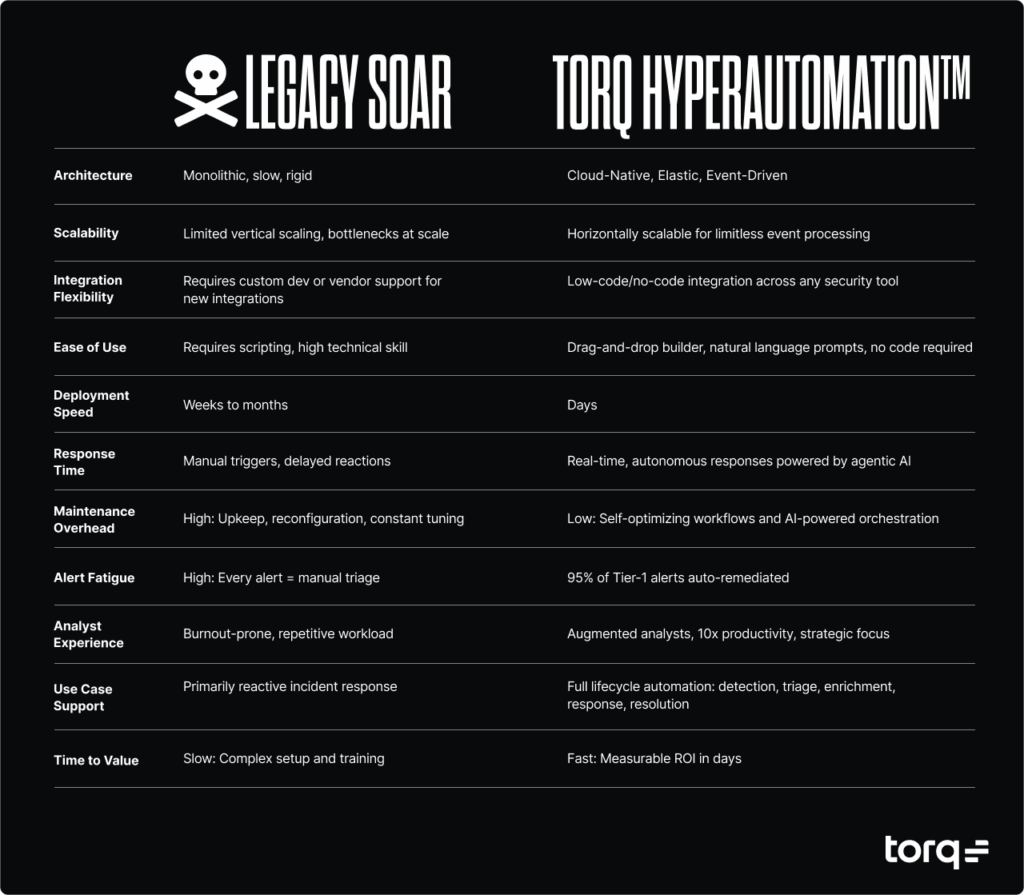
SOAR is Dead: Long Live Hyperautomation
The era of legacy SOAR is over. Organizations are increasingly making the switch to Torq Hyperautomation, the true AI SOAR alternative that can meet the modern SOC’s demand for speed, autonomy, and adaptability.
Ready to step into the future of security operations? Our team has helped major enterprises from every industry make the switch, quickly and easily.

